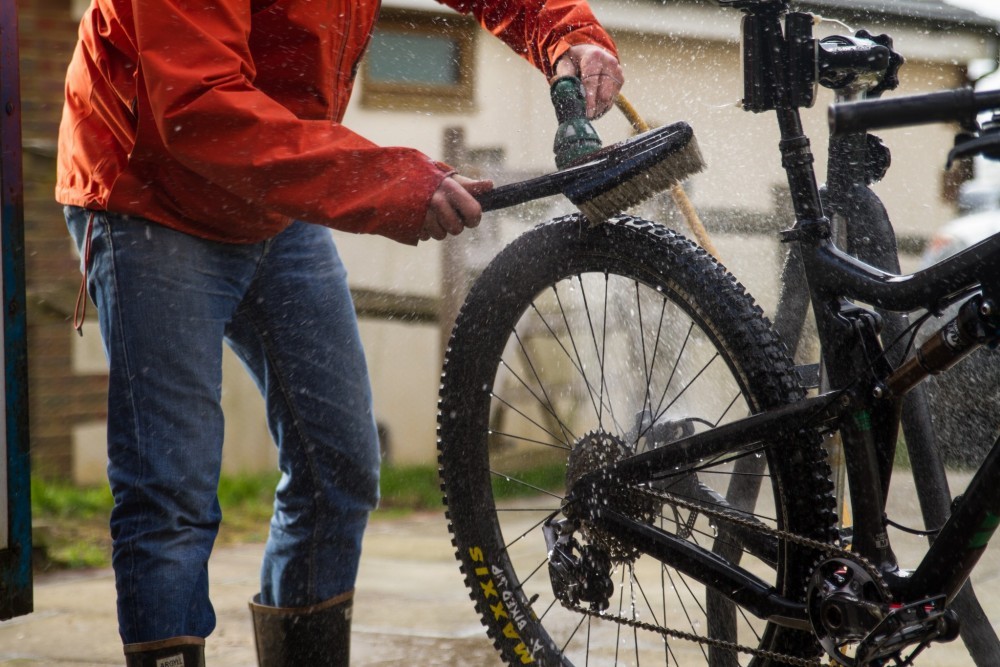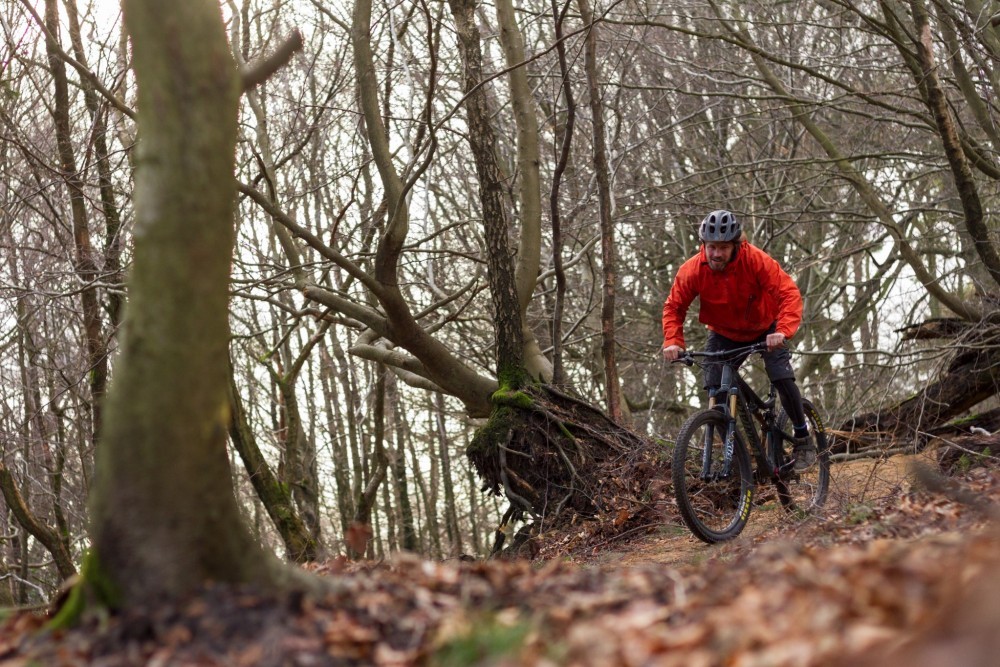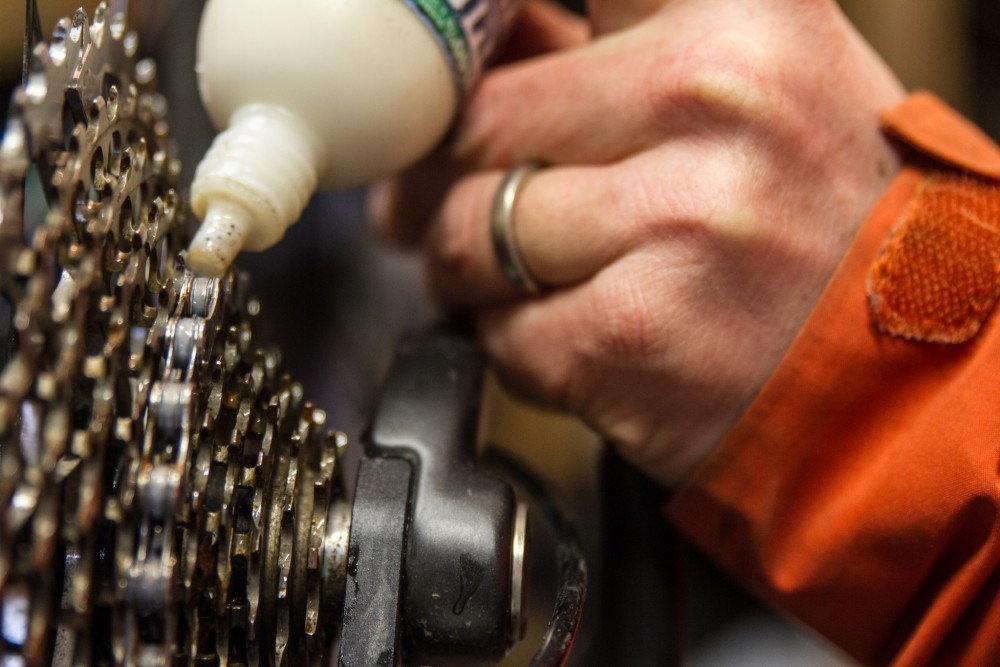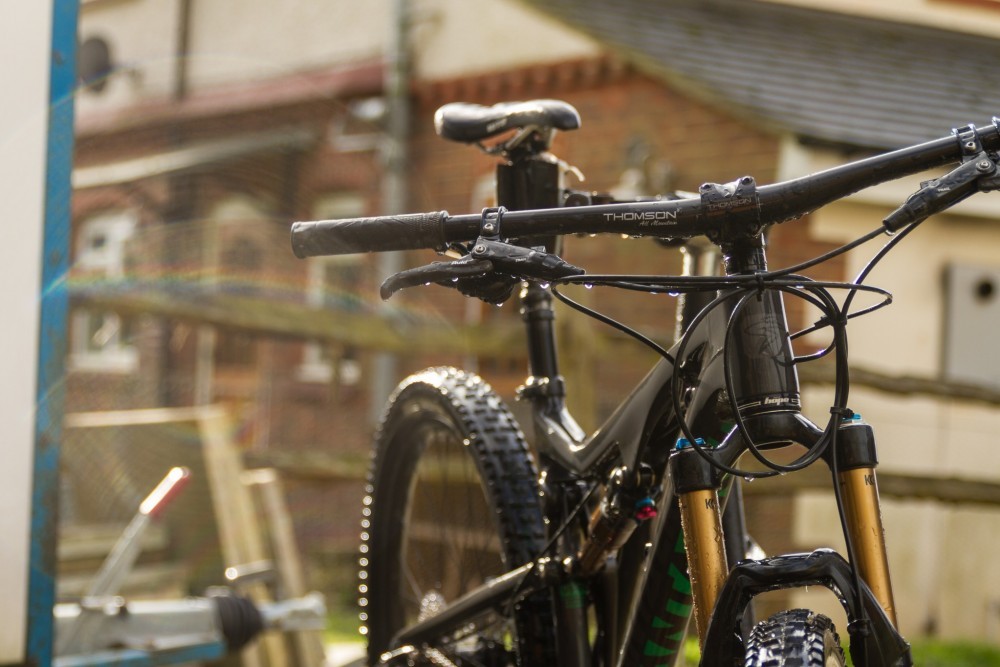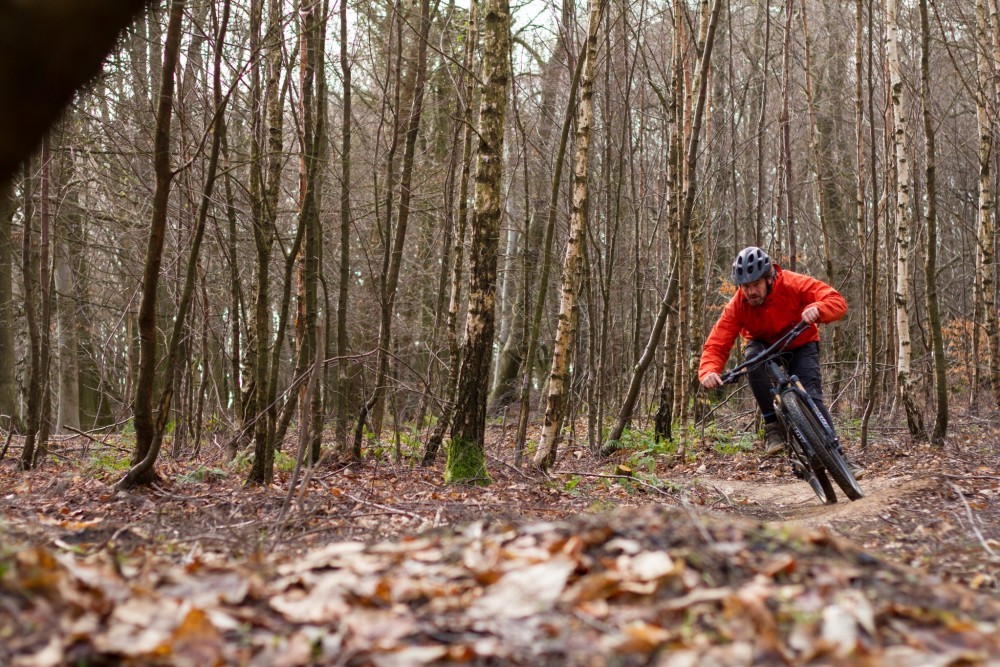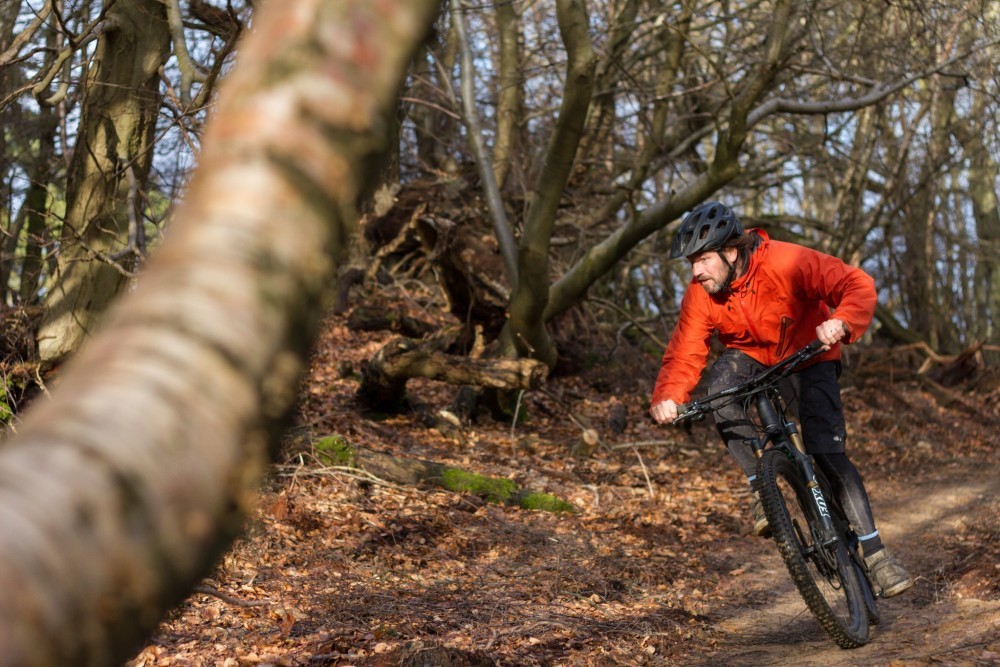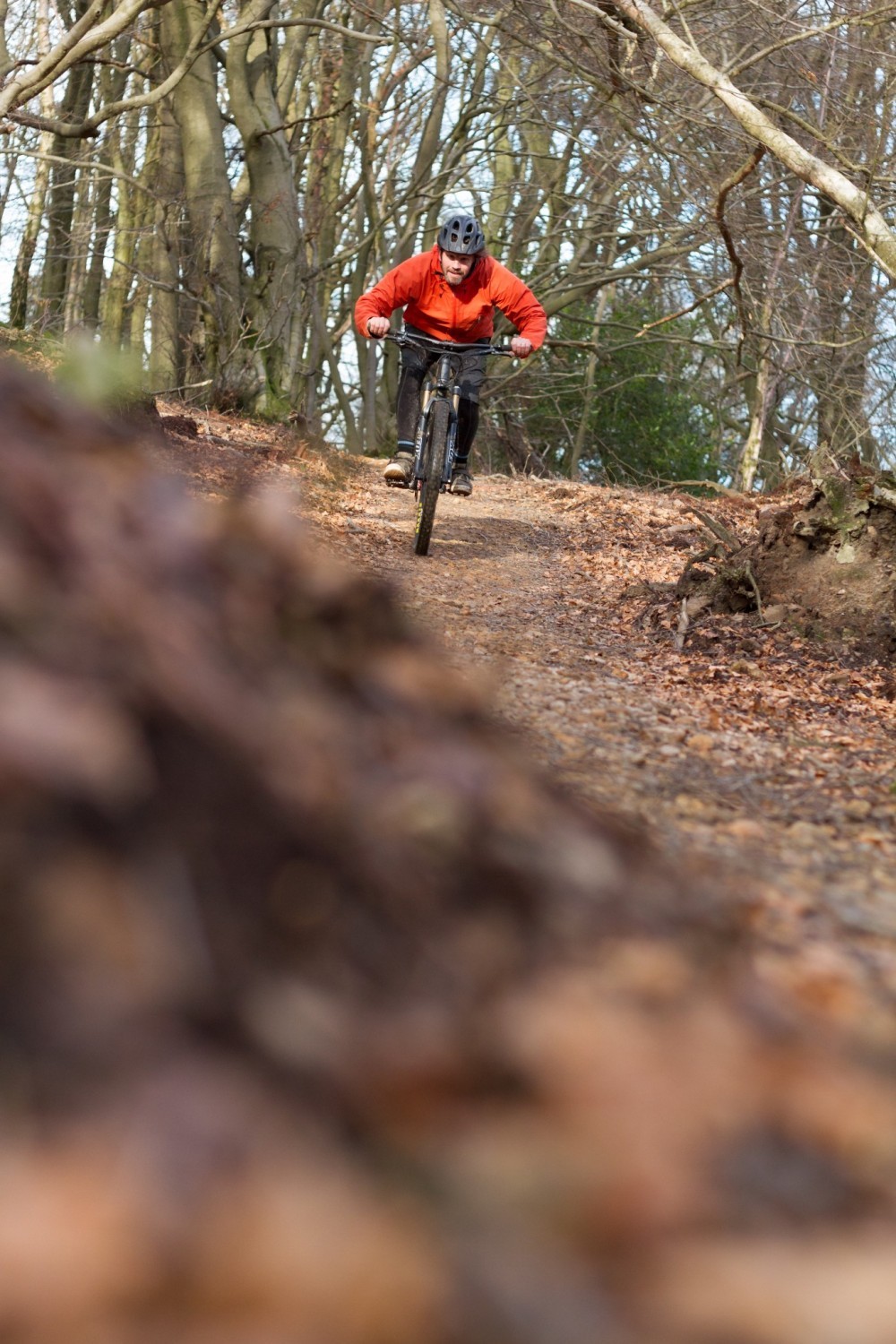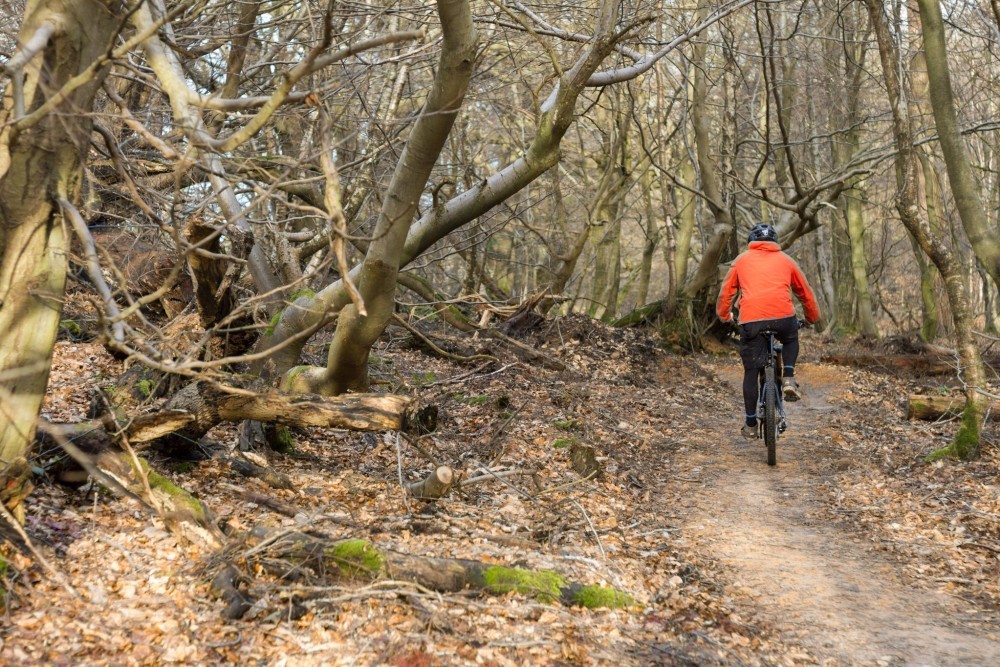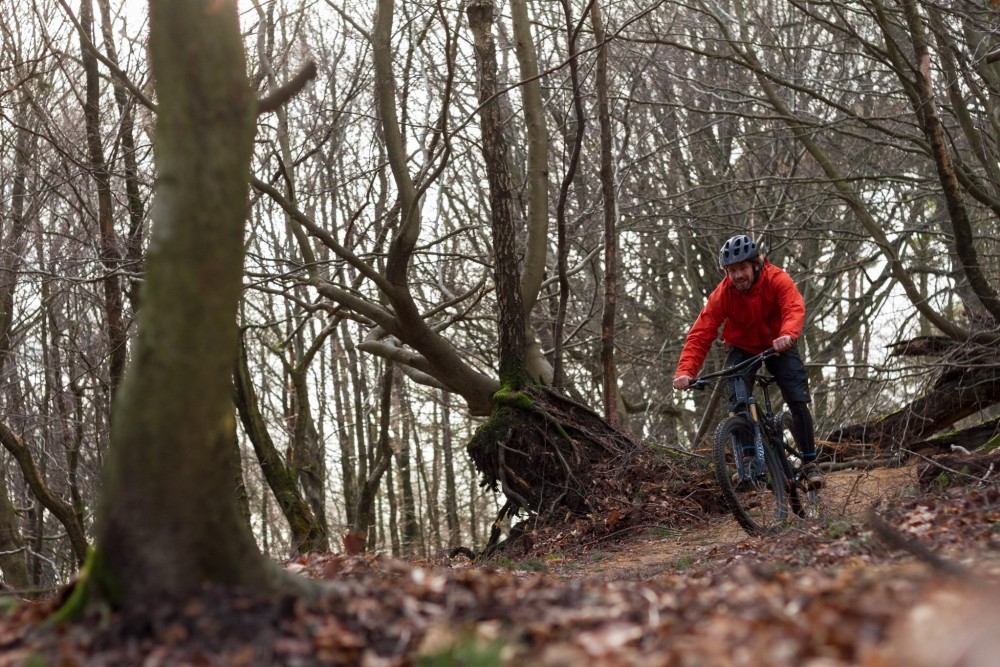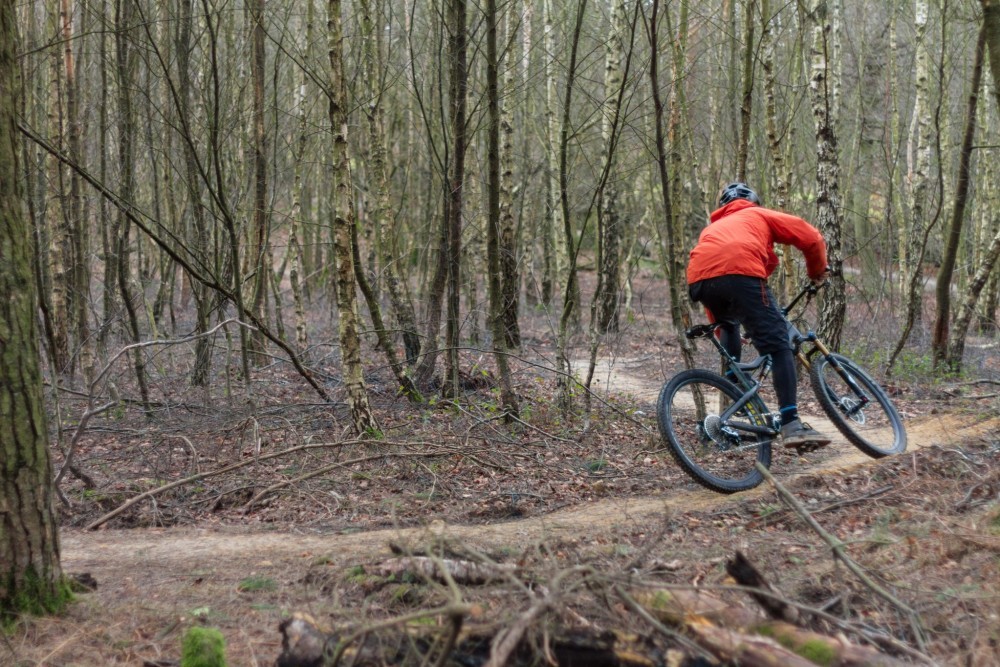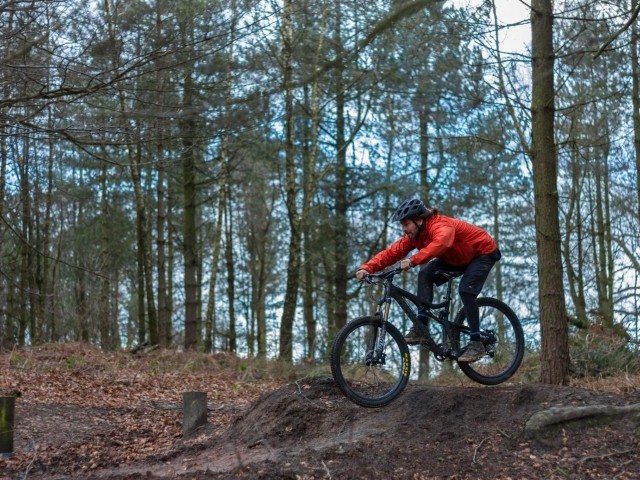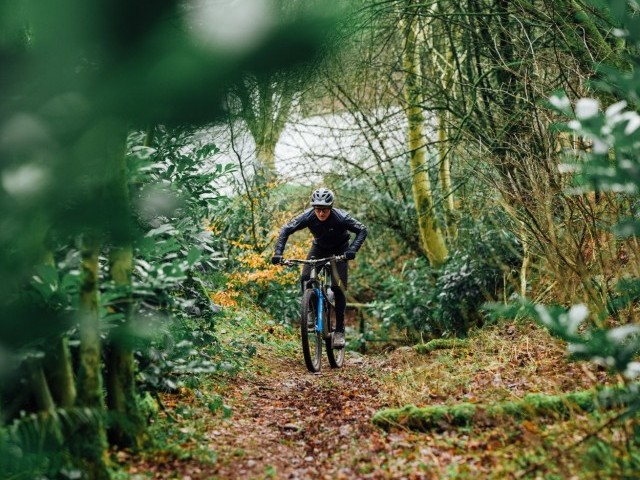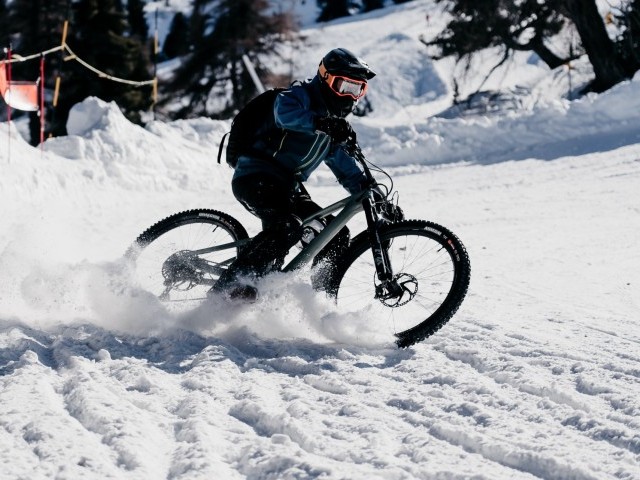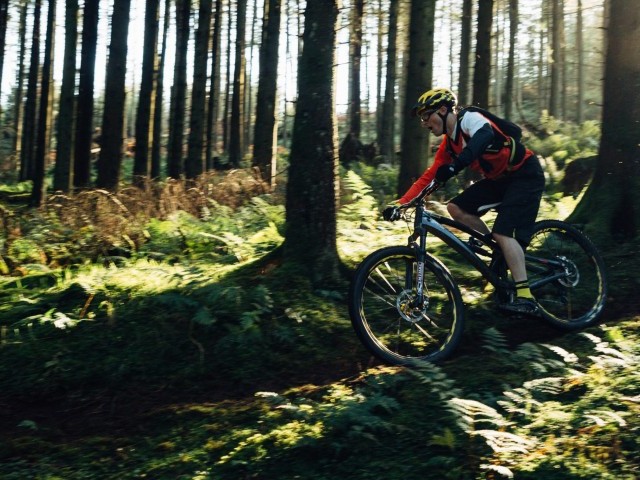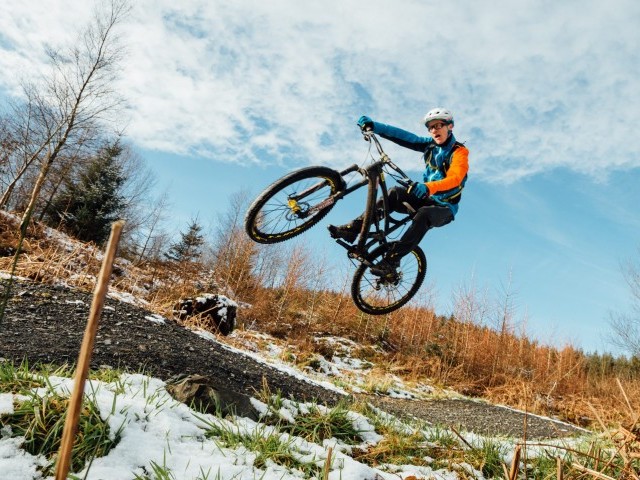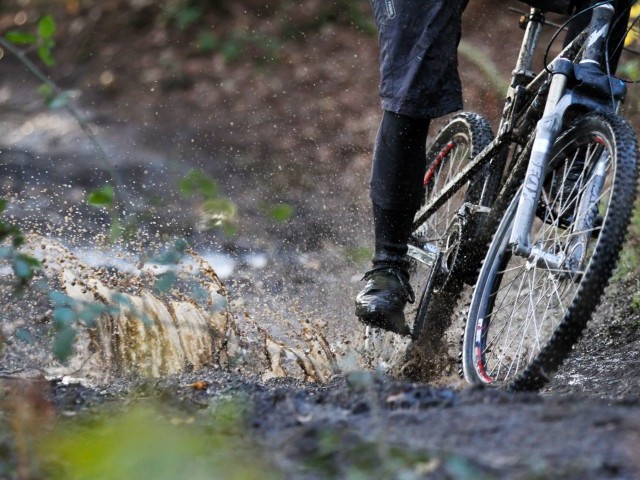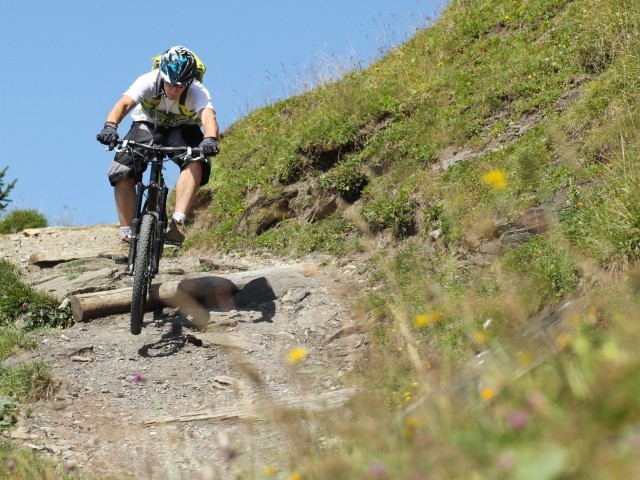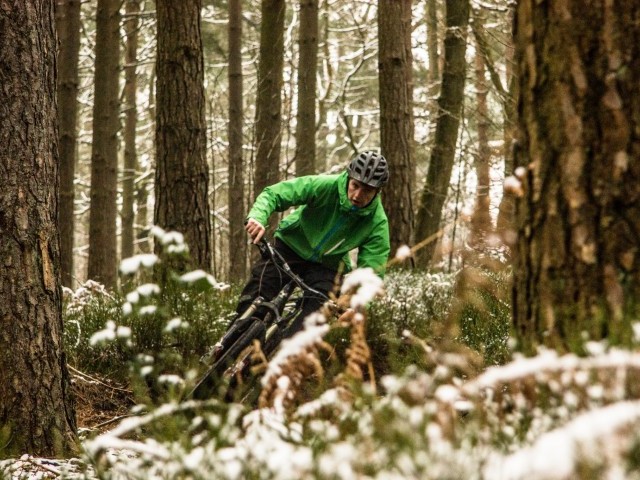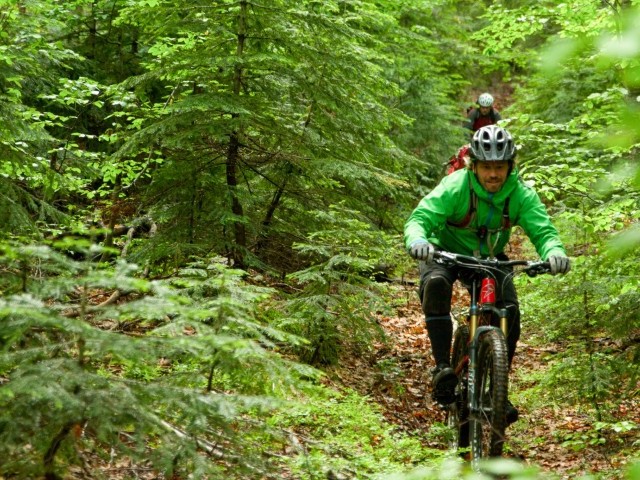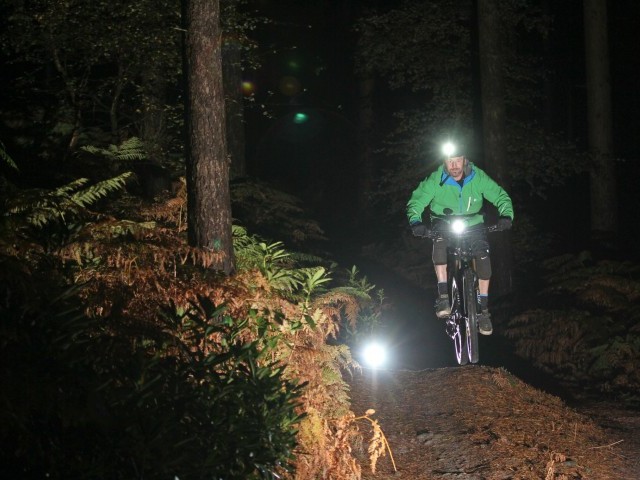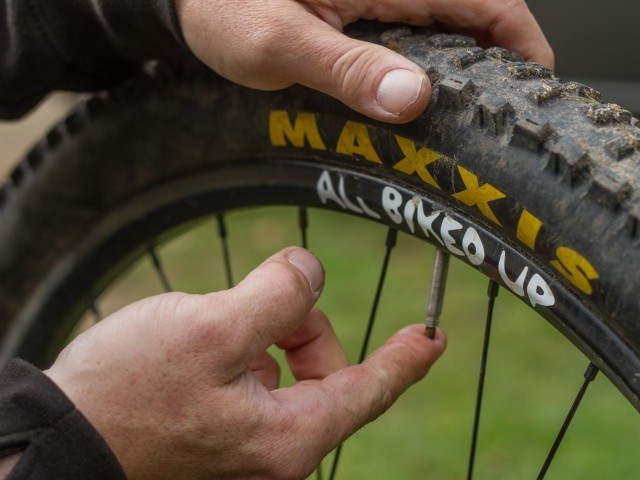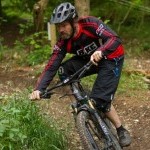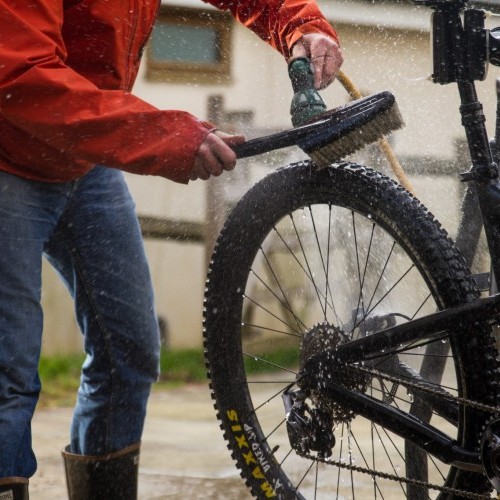
Back Behind Bars
Technique / Seasonal Riding
Introduction
Although we would all like to think that we will always ride, come hell or high water (and if you are in the UK this winter you will have faced plenty of the latter), the truth is many riders will take a longer than normal break from their time in the saddle from time to time. Health, circumstance, workload, injury, apathy, or simply forgetting what fun is to be had on two wheels, can lead to a break from riding.
A New Year commitment to getting more active, improving weather (apparently it can happen), or physical recovery can each herald a new resolve to saddle up and get back on the trail.
Although your riding buddies who have stayed the course will welcome you back with open arms (although one would hope with also some light to moderate banter regarding your leave of absence - unless medical), the trail might be a little less welcoming than you remember.
This issue we’ll look at some very simple considerations that should ensure your return to the trail is not a second baptism of fire.
Of course on your return you wont be devoid of all your skills and ability, after all mountain biking is more than just a bit ‘like riding a bike.’ Yet reaching your previous levels of confidence and ability can take longer than you expect. Over time you may well reach previous levels of performance prowess, but to ensure this path is as smooth as a freshly Botox’d brow, a little time invested immediately will help speed things, and you, along.
Your Equipment
As always, no matter how good a rider you are (or were last time you rode) your performance and success is, at least in part, dependent on your equipment. After an extended break from riding, a bike that has stood dormant may not be fit for the trail. The longer it has stood neglected, the greater the likelihood that it will need attention. If you shoved it away post-ride without attention you will have to start with the real basics of getting it clean. Once clean you can then run it through a more extended bike safety check than you would if it was in daily use. The most common areas that are likely to succumb to gremlins during periods of inactivity are the drive train and gear shifting components. Replacing your cable outers and cables can make your bike feel brand new and is a relatively quick and inexpensive revamp that will massively improve performance.
Essentially the moving parts don’t like periods of inactivity and cleaning and re-greasing where appropriate before you hit the trails will help ensure that your reborn enthusiasm has a more longevity than an X-Factor winner’s musical career. Suspension performance will need checking. Resetting the levels of air in shocks, rebound rates and compression settings each should not be overlooked. Smashing through your suspension can cause long-term (and expensive to fix) damage in the space of a single ride.
It is also a good idea to think about checking over the torque settings of key bolts and fixings. Work your way through the bike in a methodical manner. Crank arms, grip locks, stem bolts etc. will only take a couple of minutes to run through.
The longer the bike has stood dormant the more thoroughly you should check it over, but the bare minimum would be an enhanced pre-ride ‘M check’ (see previous technique articles for details about the ‘M check’). If you like to keep things simple and your bike reflects this, there will be less to check. If you do nothing else, remember your ABC; Air, Brakes and Chain
When it comes to your equipment it is not only your bike, but also your back pack and its contents, that might need a check. Hydration bladders might have quite literally come to life. A mouthful of ‘Lumpy water’ may offer a little more in the way of sustenance than you were expecting, but wont offer you the refreshment that you are looking for mid-ride.
Tools have a habit of not being where you expect them to be and a little consideration before you leave for the trail might well spare you a long walk home. Perhaps the most overlooked, and potentially important element to your kit bag, is your first aid kit. Probably the least selfish element to your kit, this may well need revitalising. Opening it up when the need arises only to find a mildewed plaster and an empty tube of Savlon will make a bad situation no better. If you are currently thinking, ‘no need to do this as I don’t have one’, remember that even though, for some, riding might be a solitary affair, MTB is about community. You can play a bigger part in that community simply by carrying a small but well stocked first aid kit, not to mention the fact you may one day need it for yourself too!
With your kit and bike checked over and attended to you are ready to roll and might feel ready to hit the trails. It is not just your chain, however, that might be a bit rusty, and your bike isn't the only thing that might not be ready for the rigors of the trail.
You
Warming up and stretching my have never been part of your pre-ride routine, but if you are back on a bike after a break (particularly after recovering from an injury) it will do you no harm to do so...apparently it can even help! Warming up for any physical activity will help avoid strains and tearing muscles. When it comes to MTB its not just preparing for the physical exertion aspect of a ride that warming up correctly will have a positive effect on. If your muscles are tight you are less likely to ride fluidly. Loosening up generally will promote a better ‘on bike’ range of movement.
Having loosened up off the bike, running through a few ‘skills drills’ will promote a readiness for the trail. Again, its not just a consideration if returning from a prolonged riding absence, but will also benefit your ride even if the mud on your tyres hasn’t dried since your last outing. The longer your break, the easier it is for instinctual responses to creep back into your game. You may have worked hard learning to replace the intuitive gut responses that often blight riders with correct learned responses, however after a break you may find the learned responses are far from prevalent. Getting used to moving around the bike freely and also moving the bike around below you will help rekindle ‘best practice’ in your riding.
Exploring the range of movement around the bike, dropping rear of the centre line and back up, bending at the knee at not just at the waist will start to limber you up nicely. Flexing out your Achilles tendon, rising on to your toes then dropping down on your heels and sinking your weight onto your pedals will get your weight nicely planted through your pedals. Rolling your wrists down will also promote better technique. When it comes to movement, often it is more the bike than you that is important. A little zig-zagging will allow you to rediscover the feeling of tipping the bike over with your hands not your hips which will encourage better body positioning through corners. The final skills drill that will serve you well and help put to bed the biggest problem that can blight a rider is to practice pushing ‘through’ the bike. Many trail scenarios can lead to an instinctive desire to pull up rather than push. Pulling up through the hands or feet is rarely the correct response to a trail, but are the hardest instincts to overcome. You don’t need to stay in the car park until you can hold a manual for 100 yards, simply start to reawaken the ability to create drive, lift and acceleration by pushing. The push through the bars with a dropped wrist, and the pedals through a dropped heel, is crucial to many aspects of taming the trail and performing technique correctly. Pumping, jumping, dropping and dealing with the key skills that lies at the heart of riding, i.e. dealing with the stalling effects that the trail presents, all rely on creating drive in the correct way. On returning to the bike this crucial dynamic, ‘the push’, delivered by rotating your mass through the key contact points, can be stifled. Loosening up physically will help promote a return to form on this front.
It is a ‘push bike’ so make like 90’s pop duo Salt-n-Pepa (cue music) and “Ah, push it, p-push it real good”.
Having made your bike and kit fit for purpose, limbered up, loosened up and engaged with the bike properly, you are physically prepared for the trail ahead. That leaves two areas of potential change to consider; the trail ahead, and your reactions to it.
Performance Cues
The first thing to be aware of is that the trail ahead could well have changed. Trails are organic. Whether by design, or indeed design fault, a trail will continually evolve and change. If you’re expecting to ride it flat-chat, you need highly tuned skills and good reactions, or a very good knowledge of what lies ahead. Many trails are unofficial and while you were away the trail pixies may well have decided a 10-foot gap jump is in order where previously there was none. Bowling over a jump you never encountered before without scoping it out is not a good idea unless the trail is graded and you know your capabilities match that grade, or you are following a rider who knows the trail and you know you are on a par with them. (In a sense you will be trusting their judgement). In short, don’t expect the trail ahead not to have changed. The earlier you spot those changes the more appropriate your responses are likely to be.
Even if the trail has not changed your reactions to it may have.
Your ability to deal with ‘performance cues’ will definitely suffer after periods off the bike. To recap ‘performance cues’ are those things that affect the way you ride. They can be Visual, Input or Anticipation based or a combination of all three.
Absence might make the heart grow fonder, but it can also make the jump look, and feel, longer!
The mind is a powerful tool and your mental game can suffer the most after a period off the bike. ‘Looking’ is the most fundamental skill easiest to learn, yet hardest to master. A trail you are revisiting after a break will make more ‘noise’. The more you look down rather than ahead effectively the closer to the noise you are and the more disruptive it can become. As you are riding more in the conscious on your return you will be easily drawn in by visual performance cues, watching them onto your wheel. Your sense of time perception changes and because you are seeing things late decisions are rushed and reactionary rather than proactive. Learned instinct (especially that not exercised for a while) will be replaced with ‘flight and fight’ based responses that dog even very experienced riders from time to time. Returning to the saddle it is important to address this as soon as you can. Work really hard at looking down the trail as far as you can see or the furthest point of elevation - you will notice an immediate difference to your perception and ride more confidently and fluidly.
Three months on a sofa will have seen your brain and body get used to being cuddled up tight with each other. Back on the trail you need to get the brain and body a good distance apart. The further ahead of the bike you are thinking the earlier you will make decisions. The techniques you employ will be delivered unconsciously while your brain is off dealing with the next section and beyond. Staring down the barrel of your forks you will never get into this zone, everything you do is likely to be jerky, reactive and responses will be ‘flight or fight’ based.
Anticipation can also blight the returning rider. Excitement and eagerness (fight) at one end of the spectrum, or tension and fear (flight) at the other, share some common ground. Although born out of different emotions the common symptom is one of ‘freeze.’ In either instance you are likely to tighten up on the bike, tense your muscles, move less fluidly, and maybe hold your breath. Essentially you are riding in a state of heightened tension ‘waiting’ for the trail to have its effect on you and your bike, rather than being proactive in your decision making.
It is not just a break from riding that can lead to a heightened state of anticipation or as we call it ‘waiting’, changing weather, trail conditions or just a bad day in the office can all affect how you deal emotionally with the trail.
Whatever the cause, and however long your break from riding, be aware that anticipation can easily interfere with your performance. Think through the section early, make your decisions sooner, commit to your chosen approach, line choice and entry speed. You should make only ‘minor modifications and changes’ (Sterling Moss) within any given section.
If you feel yourself holding your breath, gripping on tightly, or backing away from oncoming features, try to loosen up and breathe. Think and look further ahead and make decisions earlier. If your brain stalls on the trail and you freeze, simply waiting for what is going to happen to happen, you will be at the mercy of the trail. Remember you are the driver, not a passenger.
Performance cues are intrinsically linked to each other, the greater your level of anticipation the more ‘input’ will affect you. Tense and tight you will feel every bump on the trail and can easily negate the positive effects of a well-tuned suspension system. Your earlier skills drills (if you did them) will help you to respond more correctly to ‘input.’ Dealing with input is all about what we term ‘energy management.’ Yes, your bike’s set up plays a part in this, but you have the necessary suspension built into your own body to deal with a lot more than any fork or shock will.
Both your levels of anticipation and succumbing to visual performance cues can combine to undermine good energy management. On returning to the bike it is important to try and enjoy the trail and revel in its challenges, not fear them or just charge at them with a fixed grimace.
A break from riding is an unfortunate inevitability of life, but returning should not be a case of going back to square one and having to relearn everything. That said, revisiting the fundamentals and re-establishing some core skills will serve you well.
Whatever the reason for a break & however long it has been, with the right approach you will be back to form fast. Hopefully you will soon reach new heights in terms of ability and enjoyment and all the while be promising yourself that you will never let such a prolonged break happen again…
This technique article was in Issue 28 of IMB.
Related
By Richard Kelly
Richard Kelly has been riding bikes since forever, and teaching people to become better mountain bikers for over a decade. He’s always out in the Surrey Hills training riders, building trails and riding for himself whenever he gets the chance. His unique perspective on mountain bike technique has earned him fans the world over, with some speculating he is actually Jamiroquai or perhaps Jack Sparrow…






